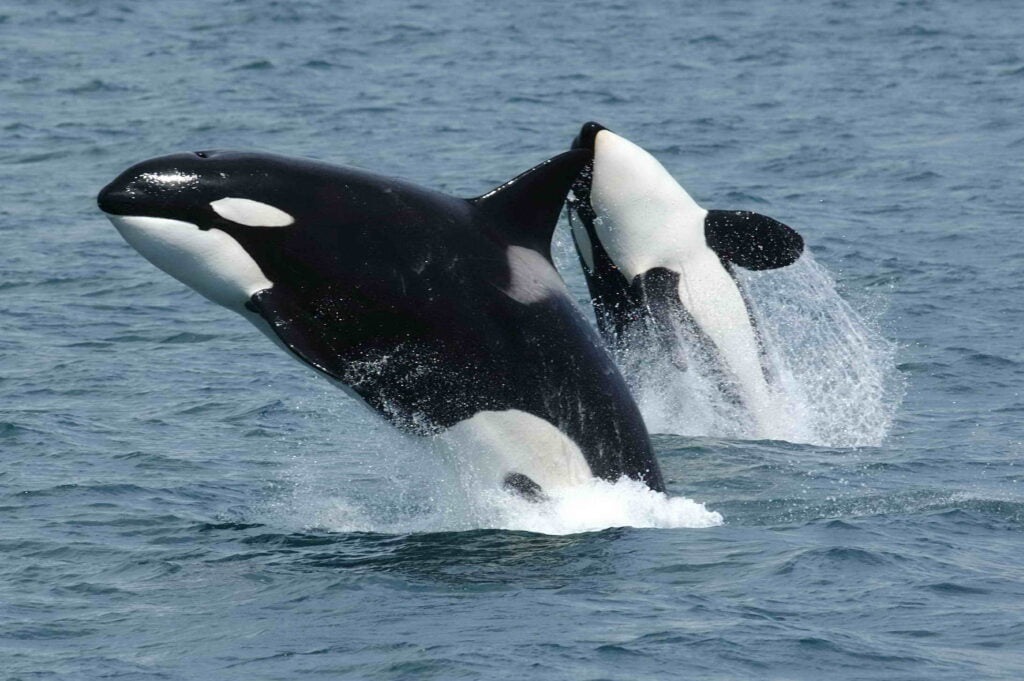Orca Whales aka Killer Whales, are not a species one would expect to find in the warm, shallow waters off the coast of Florida. They are predators of colder waters like Antarctica, Norway, and Alaska. However, in recent years there have been an increasing number of orca sightings in this unlikely habitat. These sightings are a rare and exciting event for Florida locales. But why are Orcas heading to Florida’s warm waters? Before we unveil this mystery of Orca whales Florida’s unexpected visits, Here is some talk of the town last year in newspapers:





The sighting of orca whales in Florida is a rare occurrence, but it’s not entirely unheard of. In fact, there heave been several sightings of orcas in Florida over the years. Recent reports from marine enthusiasts, fishermen, and local residents have highlighted these rare encounters, sparking curiosity and excitement among the community.
In January 2023, stranding of the killer whale in Florida has provided scientists with an opportunity to learn more about these marine giants. Scientists have proposed several theories to explain the unexpected migration of these large marine mammals into the warm, equatorial waters of the Sunshine State.
What are Orca Whale

According to National Oceanic and Atmospheric Administration, The killer whale, also known as orca, is the ocean’s top predator. It is the largest member of the Delphinidae family, or dolphins. Members of this family include all dolphin species, as well as other larger species, such as long-finned pilot whales and short-finned pilot whales, whose common names also contain “whale” instead of “dolphin.” Here are some interesting facts about Orca Whales:
- The name killer whale derives from their original name ‘whale killers’ given to them by sailors who saw them hunting whales. Over time, the name eventually switched around
- Despite their name, killer whales are actually dolphins
- Killer whales are black and white, with a gray patch called a “saddle” or a “cape” on the back
- According to the SeaWorld organization, Orcas are the largest members of the dolphin family. Males are bigger than females, but they vary in size and weight, depending on the type of orca.
- The largest orca ever recorded was a staggering 32 feet (9.8 meters) long and weighed 22,000 lbs. (10,000 kilograms)
- Males can grow as large as 32 feet (9.6 m) long and weigh 8 to 9 tons. Females can reach 23 feet (8.2 m) in length and weigh up to 4 tons.
- Orcas generally live in pods (groups) consisting of several females, calves, one or more males, and/or juveniles. Some pods consist of a mother and her offspring who stay with her for life. This type of matrilineal family structure has been observed in the U.S. Pacific Northwest
- Killer whales are top-level predators in the ocean recognized as among the most widely distributed mammals on the planet occupying every ocean
- Sometimes called “the wolf of the sea”, the orca can be a fierce hunter with well-organized hunting techniques.
- Worldwide, killer whales have been observed preying on more than 140 species of animals, including many species of Chinook salmon fish, sharks, rays, sea turtles, dugongs, moose, penguins and even whales.
Where are orcas found?
According to the National Oceanic and Atmospheric Administration’s (NOAA), there are approximately 50,000 orcas alive today, and they are mostly found in colder waters. This includes the surrounding waters of Antarctica, Norway, and Alaska, with some being found between California and Russia, and a few in tropical and subtropical waters. However, most today are found in the Northern Pacific waters.
Orca Whales Florida Visit! Why?
The coastal waters of Florida are famous for their diverse marine life, attracting many Scuba divers, Snorkeling enthusiast and scientists alike. While dolphins, manatees, and various species of whales are commonly spotted in these warm waters, the recent and surprising visits of Orca whales have left the scientific community and locals in awe. Let us explore the possible reasons behind mystery of Orca Whales Florida Visit:
Climate Change Disturbance
According to The Pew Charitable Trusts, warming in the Arctic and Antarctic regions has caused sea ice to melt. Therefore, killer whales who find food near ice have been forced to migrate and find ice elsewhere. Their prey is commonly found around the sea ice, such as Penguins and Weddell seals, are migrated to other locations when the ice is gone. As ice melts and temperatures rise, their food supply and environmental conditions are altered. Data collected by The Pew Charitable Trusts shows that this type of orca is decreasing in population at a rate of almost five percent per year. However, orcas who are used to foraging in open waters are not as affected, and are experiencing a much higher survival rate.
The Allure of Abundant Fisheries
Killer whales are opportunistic feeders which means they will take a variety of different prey species. Compared to overexploited northern oceans, Florida’s productive estuaries and immense fish populations present attractive, plentiful feeding opportunities. Baitfish, marlins, mahi-mahi, and more offer nourishing choices over scarce pickings in regular orca ranges. This prey-rich environment entices the traveling predators. However, their presence also poses risks.
Food Limitations
According to The Whale Museum Organization Killer whales are opportunistic feeders which means they will take a variety of different prey species. Up to 85% of their diet is salmon, with Chinook salmon being far and away their favorite. During the last 50 years hundreds of wild runs of salmon have become extinct due to habitat loss and over-fishing of wild stocks. This may be affecting the whales’ nutrition in the winter and may require them to change their patterns of movement in order to search for food. These whales roam over much of the North Atlantic. During winter months they migrate south to areas where prey is seasonally abundant.
Warm Water Speeds Molting
According to National Oceanic and Atmospheric Administration (NOAA), All birds and mammals regularly shed their skin, fur, or feathers in a process known as molting. Marine ecologist with Oregon State University’s Marine Mammal Institute, Robert Pitman and his co-authors propose that whales foraging in the freezing waters of Antarctica conserve body heat by diverting blood flow away from their skin. That would reduce regeneration of skin cells and halt the normal sloughing of skin. Migrating to warmer water would allow killer whales to revive their skin metabolism and molt in an environment that does not sap their body heat. The authors suggest that this drives their migrations to Florida’s warm waters.
Can Orca Whales Florida visits Sustain them?
If prey lures traveling pods, what enables long-term survival in these regions? Warming may gradually make waters more hospitable, but ecosystem imbalance threatens orcas and flatfishes alike.
Prey fluctuations also dictate orcas’ fitness. Competing with a state that relies on fishing may not be sustainable. Conservation requires addressing both climate change and overfishing to restore stable food webs, in Florida and beyond.
Threats
Here are some of the main threats facing killer whale populations globally:
- Prey depletion – Overfishing and reduced fish stocks, especially key prey species like salmon, can lead to food shortages.
- Ocean Pollution – Toxins like PCBs can accumulate in orcas’ blubber and cause reproductive issues
- Habitat degradation – Loss of sea ice in the Arctic due to climate change destroys important orca habitat.
- Captivity – Capturing orcas for marine parks breaks up pods and causes significant stress.
- Vessel strikes – Collisions with boats and ships sometimes lead to injuries and fatalities, especially in busy coastal areas.
- Conflicts with fisheries – Orcas become entangled in fishing gear
- Inbreeding – Some small, isolated populations exhibit reduced genetic diversity from inbreeding which reduces fitness
- Ocean warming – Rising ocean temperatures affect prey distribution and availability while changing habitat conditions
Conservation
All killer whales are protected under the MMPA and the Southern Resident population is listed as an endangered species under the ESA. They have focused on conservation efforts to help rebuild endangered and depleted populations on the West Coast and Alaska.
Conclusions
Scientists think the killer whales are moving south to find new sources of food. As the seas get warmer, some of the whales’ normal prey like seals and salmon are shifting south. The orcas go where their food goes. Florida’s oceans are warm and full of good things for killer whales to eat like sharks, salmons, tuna, and other fish.
But the journey to warm or subtropical water can be dangerous for orcas. Sometimes they get stranded on beaches and don’t make it back to the ocean. Strandings happen when whales get confused, lost, sick, or injured. They get stuck on shore and can’t swim away. Orcas are smart, but they face many challenges migrating to new areas. We hope human can help them by creating an ocean that is safe for these beautiful Orcas!

